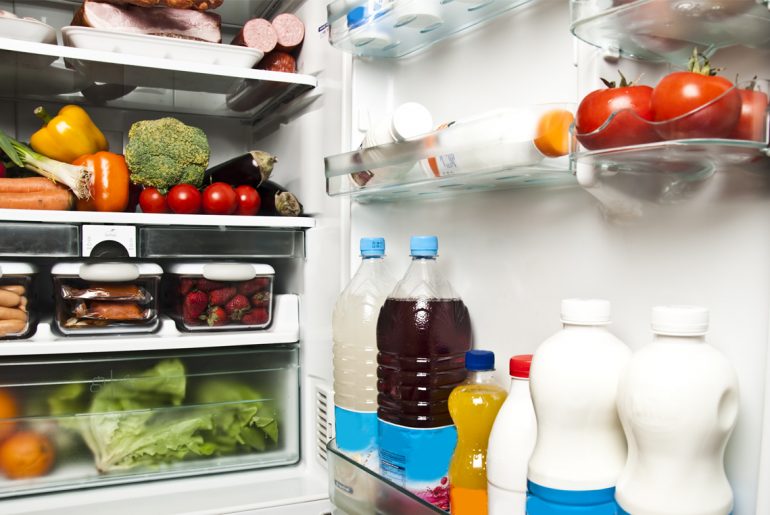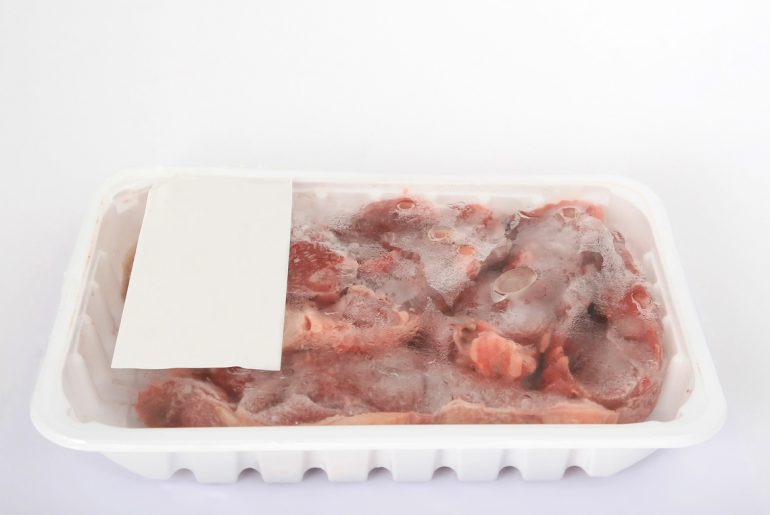The fridge is a great place for most fresh ingredients, but there are a few foods that will fare better if left at room temperature on your countertop or in a pantry. The average family of four in America throws out about $1,600 worth of food every year — often because the food wasn’t stored properly for maximum life span. Check out this list to learn how to make the most of some of the most common groceries. 1. Coffee beans If you’re shelling out serious cash on the best coffee beans, you better know how to store them. The National Coffee Association recommends storing beans in an opaque, air-tight container at room temperature. Air, moisture, heat and light are all enemies to your beans, so store in a dark and cool location, but never the fridge. Coffee is soft and porous and likes to absorb other flavors around it — in the…
Keep milk out of the fridge door, and other storage tips
Fridge designers are toying with you. While you think the door shelf looks like it was custom fitted to your milk carton, it turns out, milk stored in the door may make you ill. Store milk on a middle shelf, and only use the door to store items that don’t need to maintain a cool temperature. A well organized fridge is important for safe food storage and also to help you minimize waste. Here are a few tips to from Good Housekeeping UK that will help keep your fridge foods fresher longer. Ideal temperature: Set your temperature gauge between 33ºF and 39ºF so your food items never warm above 41ºF. Avoid putting food that are still warm from dinner in the fridge as they can cause the temperature to rise and spoil other foods — leading to those unpleasant feelings of food poisoning. Storage tips: Keep open jars of jam, jelly or condiments refrigerated. Cooked foods should…
This is why you should never defrost food on the kitchen counter or microwave
We’ve all been there — the intention to cook a nice chicken breast for dinner only to realize we’ve forgotten to defrost. Rather than looking for an alternative, we attempt to speed up the process by tossing the meat in the microwave instead. So what’s the big deal? Well, defrosting at those warm temperatures puts you at serious risk of eating dangerous levels of bacteria. Yikes! According to Professor Costa Stathopoulos from Abertay University, defrosting meat in the microwave “is really not the best of techniques.” Stathopoulos appeared on BBC Two’s Inside the Factory earlier this month and showed the difference between turkey meat that had been defrosted in the fridge versus turkey meat defrosted on the counter. The latter had twice the amount of harmful bacteria, including ecoli microorganisms. And that’s not even considering the warm temps the meat reaches in the microwave. Cold temperatures slow down bacterial growth, so your chance of an upset stomach…
Can you still eat freezer burned foods?
The freezer can be a lifesaver when it comes to food prep. Whether it’s that container of frozen mashed potatoes, a homemade pie or that slow cooker starter, frozen foods can be a lifesaver, but there’s always the risk of dreaded freezer burn. So what exactly is this icy crust composed of, and is the food still safe to eat? Freezer burn occurs when foods dry out in cold temperatures. Those icy crystals are a result of moisture escaping your pint of ice cream or bag of chicken breasts and turning to ice on the outside of the food. This means either the food wasn’t stored properly, or it has been frozen for too long — everything dries out eventually. But fear not, a little freezer burn never hurt anyone. It’s entirely safe to eat foods that have a little burn, though they might not be as tasty. Texture of freezer burnt foods…




